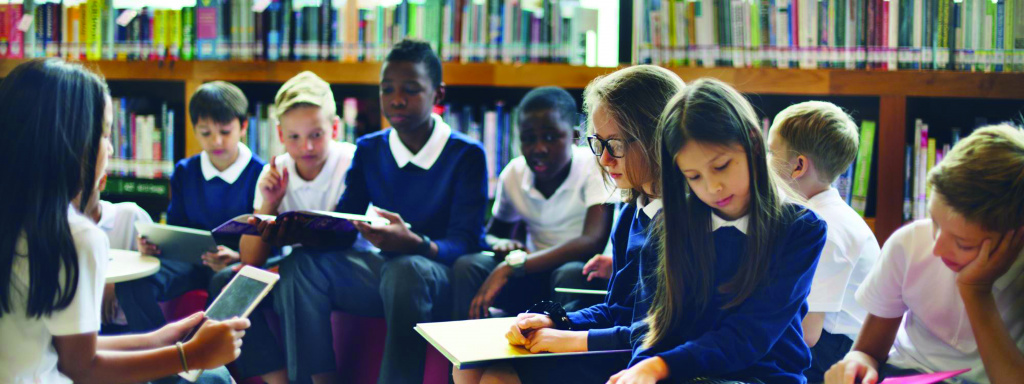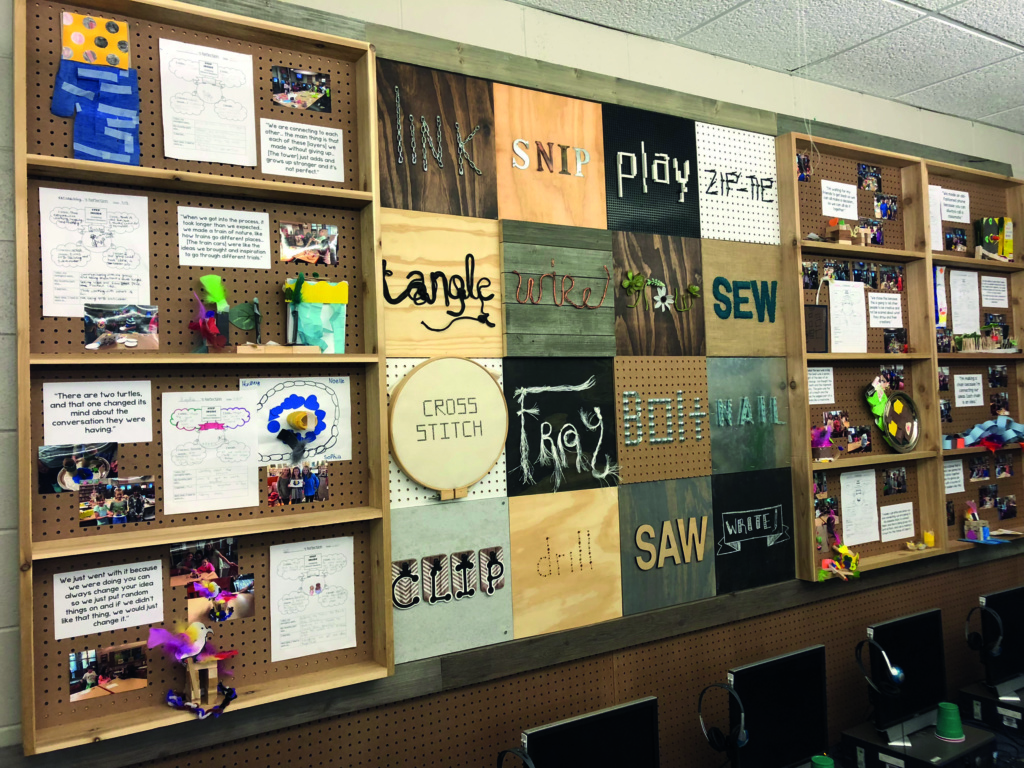
Cultivating Participation
It is the first day of media class at Delta Kelly Elementary School and 30 Year 4 students huddle around an over-sized rectangular table that is stacked with jumbo playing cards, brightly-coloured feathers, scalloped paper and an assortment of building materials. Almost everyone is talking. Some are laughing. Upon closer inspection, small groups seem to emerge. While two students look closely at a wooden block, still others dangle faux greenery and nod in agreement. “Give me a piece” one student calls, a directive met with a piece of clear tape from a neighbouring teammate. “Sanjay!” another voice rings out, “Over here!” It appears that no two students are doing exactly the same thing. Yet somehow, without strict directions, there is an industrious harmony. Students are participating together as a community of thinkers and learners.
Framing learning as a social endeavour from the first day of school sends the message that students are expected to be active participants in their own learning (Ritchhart, 2018). Moreover, intentionally designing opportunities for distributed student participation can promote access and equity (Clapp, 2017). Situating learners as members of a broader social system encourages self-differentiation. It also urges students to develop and share their own voices, reimagining and hacking pre-existing constructs of creativity. It is through these experiences that students begin to truly value the “unique talents, skills, and cultural perspectives they bring to the work of creative idea development” (Clapp, 2017, p. 7).
Building off of the work of Project Zero researchers, in this article I share documented observations of stories from my classroom practice – especially in the areas of Cultures of Thinking and Participatory Creativity.
Definitional Language
There are some key definitions that are necessary to provide clarity. The first is that of interactions and relationships (Ritchhart, 2015). Our interactions and relationships with others not only impact the collaborative nature of our classrooms, but also, and perhaps more surprisingly, the depth of student thinking (Richhart, 2015). Making meaningful personal connections, questioning, attending to patterns of discourse, pressing for student thinking and supporting student independence are some of the essential moves teachers can make to promote “interactions that support thinking and learning” (Ritchhart, 2015, pp. 218–225). Another key definition is participatory creativity (Clapp, 2017). As students engage with one another to perform a creative task, they enter a complex system of participatory navigation, with ideas at the centre. Documenting both the development of an emerging idea and our participation in that process situates creativity as a concept emerging from the collective engagement of various actors rather than a characteristic assigned to any one individual (Clapp, 2017). Within this article, I also use the language of ‘collaboration’, ‘group work’ and/or ‘teamwork’ to describe the actions of students as they engage with one another throughout the lesson. However, it should be noted that none of these terms are synonymous with participation as described through the lens of participatory creativity.

Contextual Landscape
Participants included students ranging from Years 2–5 at Delta Kelly Elementary School, a suburban public elementary school located in Oakland Township, Michigan. These teaching and learning experiences take place in the school media centre, a hybrid space including the school library, makerspace and technology lab. Approximately 400 students participated in these variegated learning experiences over the course of the first two weeks of the 2017–2018 school year.